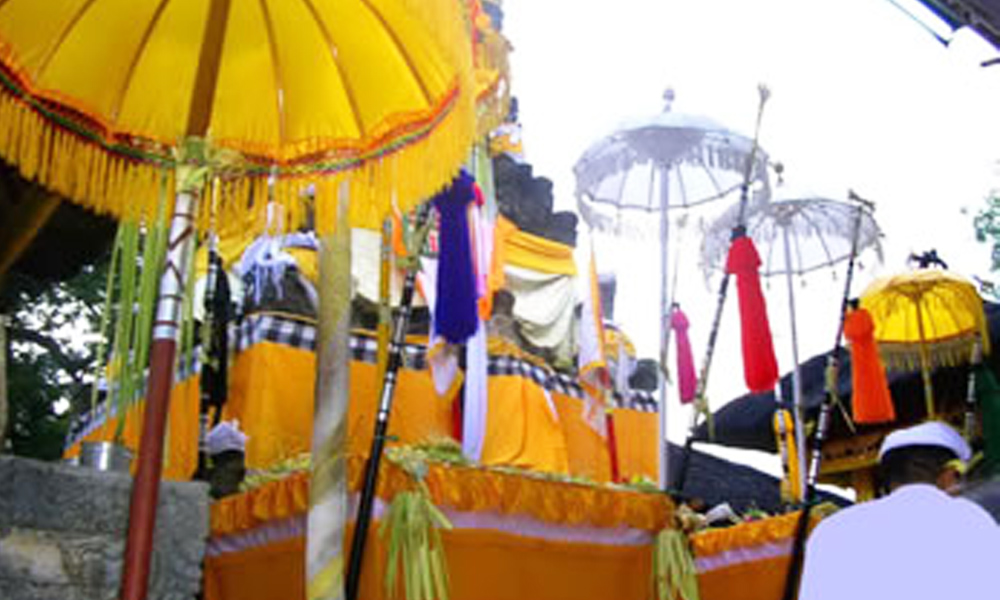PIODALAN or odalan is a temple anniversary celebrated based on the day of establishment of a temple. The auspicious day chosen is based on pawukon or lunar calendar. One pawukon year consists of 210 days, while lunar year is 354 days. When the inauguration ceremony of a temple is made on a full moon, the piodalan will fall on the same full moon in the following year.
Elements of the pawukon includes 30 wukus and wewaran (wara) ranging from eka wara (one-day week—luang), dwi wara (two-day week—menge, pepet) to dasa wara (ten-day week). In essence, three important elements used as reference for celebration are panca wara (five-day week—Umanis, Paing, Pon, Wage, Kliwon), sapta wara (seven-day week—Redite, Soma, Anggara, Buda, Wrespati, Sukra, Saniscara) and wuku (Sinta, Landep, Ukir, Kulantir, Tolu, Gumbreg, Wariga, Warigadean, Julungwangi, Sungsang, Dungulan, Kuningan, Langkir, Medangsia, Pujut, Pahang, Krulut, Merakih, Tambir, Medangkungan, Matal, Uye, Menail, Perangbakat, Bala, Ugu, Wayang, Klawu, Dukut, Watugunung). Each wuku lasts for seven days and starts on Sunday.
For instance, if a temple anniversary falls on Anggara Kasih Kulantir, it is an encounter of Anggara (Tuesday—a seven day-week), Kliwon (five-day week) and wuku Kulantir. Meanwhile, Galungan fest falls on Buda (Wednesday), Kliwon, Dungulan, while Kuningan (10 days after Galungan) falls on Saniscara (Saturday) Kliwon Kuningan.
Before the event, hamlet residents or devotees do devotional works to prepare some platform used to contain the offering in the temple. After that, penjor is erected on the entrance gates at left and right side. Meanwhile, all shrines are decorated with sacred paraphernalia, umbrella and pennants.
Temple anniversary is usually preceded with melasti procession intended to purify all the ritual paraphernalia and effigies to sources of water such as spring, lake, river or beach. As auxiliary arts in the implementation of the piodalan, devotees presented kidung psalmody, beating of kulkul (wooden split drum), gamelan orchestra and Sanghyang or Rejang Dance.
To end the procession, devotees worship for five times and after that they are bestowed with holy water and soaked rice (bija) as symbol of God’s grace and prosperity.










